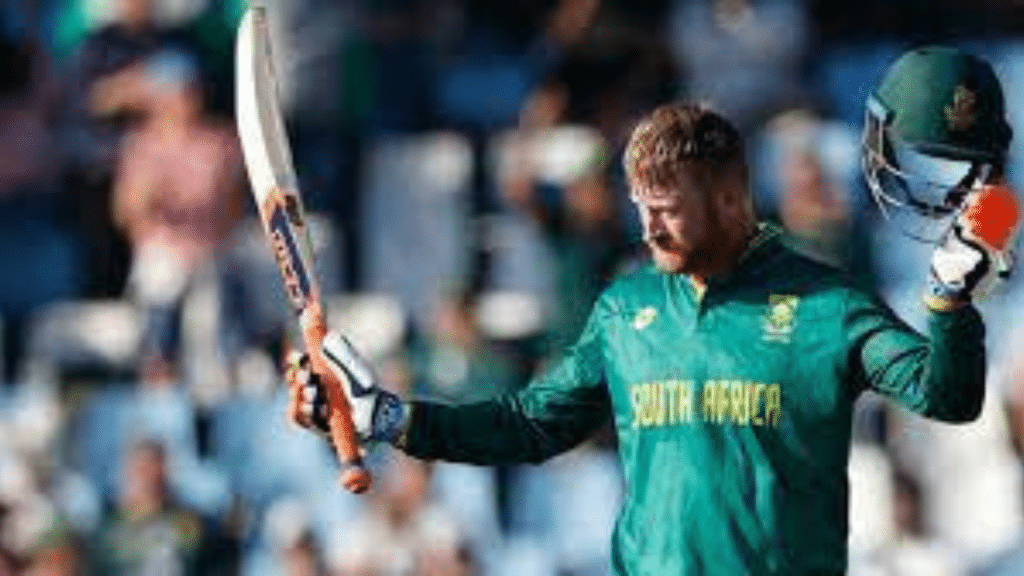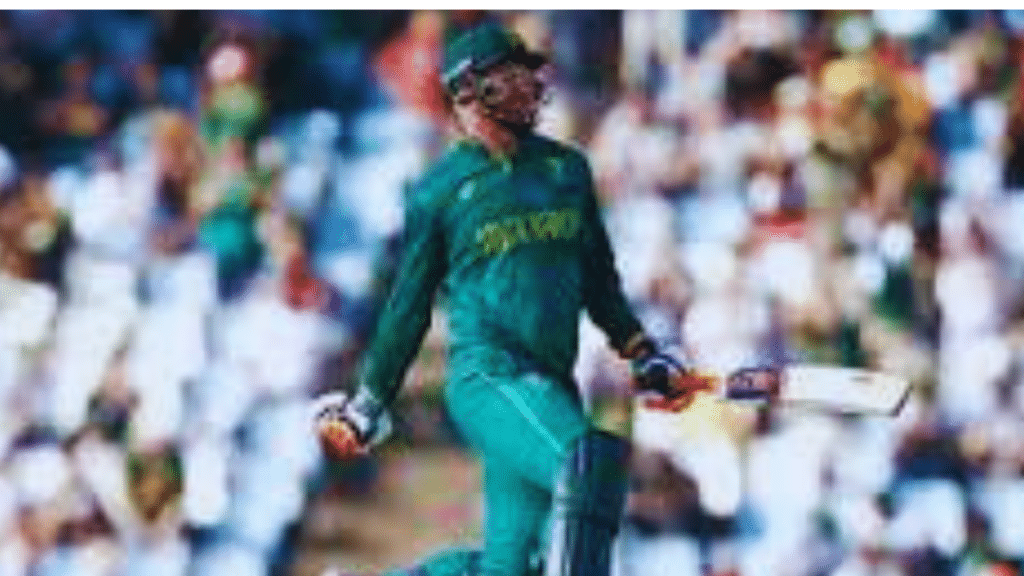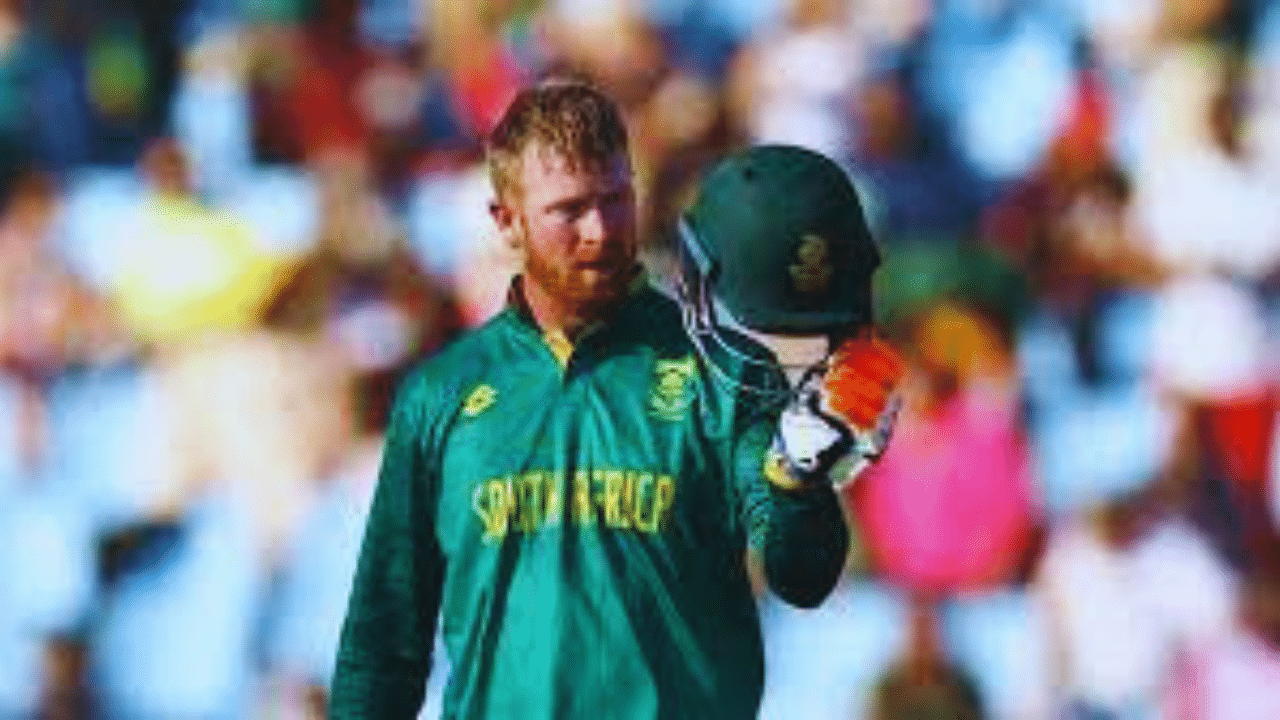Heinrich Klaasen’s

Heinrich Klaasen’s 174 off 83 knocks the wind out of Australia
Australia scored 252 runs, whereas South Africa had 416 for 5 (Heinrich Klaasen 174, Miller 82*), defeating them by 164 runs.
David Miller and Lungi Ngidi play able support roles, leaving Alex Carey’s 99 off 77 a mere footnote on a day of spectacular power-hitting.
Heinrich Klaasen put on a dazzling display of power-hitting in the vicinity of Heinrich’s home ground, thoroughly thrashing the Australian bowlers, a performance that no English adjective can accurately describe. “Klaap thapaa” is an African term, but it’s best understood as an onomatopoeic word. Say it aloud, and the rift on your palate will tell you how each time Heihttps://www.cricketwa.com/13583/player/heinrich-klaasen.aspxnrich Klaasen connected with the ball, the sound resonated.
Australia is defeated by Heinrich Klaasen’s 174 off 83, which is a huge blow.
Heinrich Heinrich Klaasen’s 174 off 83 knocks the wind out of Australia scoring 13 runs at four wickets down and another 13 at six wickets down, guiding South Africa to a formidable total of 416 runs after 50 overs against Australia’s 120 runs at two wickets down—the second-highest score for South Africa against Australia at SuperSport Park.
This series proved more than sufficient to level the series at 2-all and set up a winner-takes-all final on Sunday, which will be South Africa’s last competitive match before the World Cup. They will be quite content with how they are shaping up for it.
South Africa 416 for 5 (Heinrich Klaasen 174, Miller 82*), beat Australia, 252 (Carey 99, Ngidi 4-51), by 164 runs
South Africa has rebounded with a string of easy victories courtesy to their hitters after losing five straight games to Australia—three T20Is and two ODIs.
It was Heinrich Klaasen and David Miller who made headlines at SuperSport Park. They collaborated on a 222-run fifth-wicket partnership, scoring their runs at the fastest rate for any stand of 200 or more runs—14.47 per over. The most ever in an ODI, they scored 173 runs in the final 10 overs.
Australia was unable to equal any of those figures.
Their greatest individual score was a 77-ball 99 by Alex Carey, and their only other fifty-plus partnership was Carey and Tim David’s 72 for the fifth wicket. Then, having been stunned in the opening round, they were way out of the race.
In the first half of South Africa’s innings, Australia did a fantastic job of keeping the scoring rate around five runs per over, but they completely fell apart in the second.
The final ODI numbers for Josh Hazlewood and Adam Zampa were 2 for 79 and 0 for 113, respectively, with Zampa’s figure also being the joint-most expensive by an Australian.
He and Mick Lewis, who was also defeated by South Africa in the 438 to 434 game in 2006, share the record. Nathan Ellis gave up 37 runs in his first seven overs and 42 in his last three, whereas Marcus Stoinis only gave up 22 runs in his first seven overs and 59 in his following three.
Only Michael Neser managed to escape with minimal injuries. He went 1 for 59 in just his third ODI, which was also his first since 2018.
Reeza Hendricks and Quinton de Kock, South Africa’s replacements for injured captain Temba Bavuma, were cautious up front and finished a strong powerplay on 44 without loss.
When Nathan Ellis managed to get one to drop on a perfect length, shape away, beat Hendricks’ edge, and find off stump, it took a miraculous delivery to separate them. When de Kock attempted to up the ante, he received a leading edge off a Hazlewood delivery, and Mitchell Marsh collected a well-timed catch. Rassie van der Dussen kept things rolling with three fours from a Zampa over.
snag at mid-on.
Just beyond the midway point of the innings, Aiden Markram hit Neser, a local, to Stoinis at cover. This allowed Heinrich Klaasen plenty of time to bat, and Heinrich heinrich schliemann first run-scoring stroke showed he was pressed for time.
Heinrich bottom-edged past the backward point and sliced Neser. The final boundary for 28 balls was then scored by riding the bounce and hitting Neser through the covers. Klaasen was prepared for what would happen later during that time. heinrich haarberg
Following van der Dussen’s dismissal, David Miller joined Heinrich Klaasen. Miller made an almost immediate entrance by hitting Zampa over long-on for six. Klaasen reached fifty in the following over, off the 38th ball he faced, and needed just 19 more deliveries to complete the feat.
to reach his second hundred this year and third in ODIs.
It followed his smashing of Stoinis for three huge sixes. While his wife Sonè and nine-month-old daughter Laya cheered him on from the hospitality suites, Heinrich Klaasen leaped and whooped in joy.
Miller was happy playing a supporting role as the major hits kept coming. He had 52 runs once the partnership reached 150, 74 when it reached 200, and 38 runs to the century mark. It’s uncommon to refer to an inning of 82 runs off 45 balls as a footnote, but Miller’s was just that. In the end, Klaasen was a hitter in a league of his own, unmatched by any player on his team or the opponent.
Australia needed to get out to a fast start, and David Warner made it obvious. He attempted to take Ngidi’s width but instead cut to Miller at the cover spot. In his subsequent over, Ngidi tightened his lines and struck Mitchell Marsh on the pad. Although ball-tracking revealed that Marsh’s call for a leg-stump clip was incorrect, it was ruled as a lbw. In the fifth over, Australia had a score of 22 for 2.
After being struck on the hand by a short ball from Gerald Coetzee two overs later, Head initially decided to bat. He faced three more balls, but when he attempted to swing at a fourth Coetzee ball, he discovered he couldn’t; therefore, he was forced to retire hurt.
While the rest of the Australian lineup attempted to score at around nine runs per over to win the series, he was taken for scans. South Africa kept relying significantly on the short ball and was successful in its application. At 113 for 4 after 16 overs, Marnus Labuschagne gloved Marco Jansen down the leg side, and Stonis gloved Rabada to de Kock, making the remainder appear pointless.
Most of it was, but there was another magical moment when Ngidi passed a slower ball to Ellis, who chipped it into the air near Rabada at midfield. Rabada attempted the catch with one hand while running backwards, and the ball stuck.

Ngidi wanted a fifth wicket, but he had to leave the field because to what appeared to be cramps. That was his fourth wicket and best return of the series. Rabada defeated Australia, forcing Carey to glove a ball as he fell one short of reaching his second ODI century.

